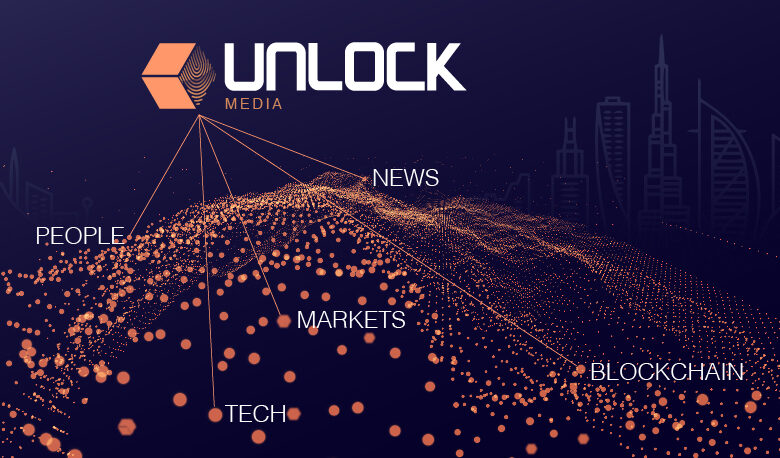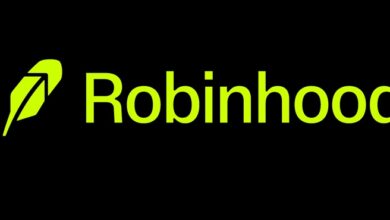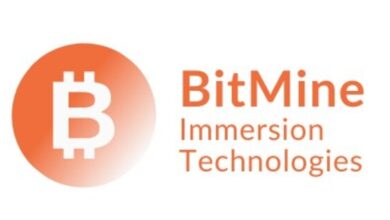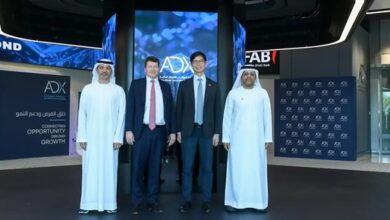Ethereum 2.0 and the Future of Scalable Blockchain

There’s new ways to think about the blockchain stack in 2018
Ethereum
Ethereum’s 2.0 road map attempts to deal with scalability issues, primarily via Proof-of-stake (Beacon Chain, Casper FFG), Sharding and eWASM. Ethereum has a fair chance of becoming a scalable global platform for collaboration. However, while they are a first-mover, they may not achieve scalability first.
To arrive at a platform for new economic systems will require a level of scalability that might honestly take Ethereum years to achieve. During that time, any number of other projects could eclipse it importantly in the scalability aspect; this is why it’s so important.
Increasingly Ethereum has off-chain techniques such as Plasma, Plasma Cash and State Channels. However, when even Vitalik Buterin says present day blockchain “sucks”, you know today’s public blockchains could be disrupted. Ethereum does decentralization better; however Silicon Valley and China can beat them to scalability without the decentralization aspect — to monetize the public blockchain model better.
Ethereum has attracted developers to blockchain, built communities, facilitated blockchain startups to achieve viability and introduced many protocols into how we think of dApp development. The entire ecosystem of open-source software projects working on building different aspects of Ethereum is rather impressive.
- Smart Contract Languages (Solidity, Vyper)
- RPC Libraries (web3js, ethers, Nethereum)
- Development Tools (truffle, ganache, solc, solium)
Ethereum has given us hope for things like open-source decentralized systems, though the scalability bottleneck appears rather serious for Ethereum’s future sustainability. However, Ethereum is migrating its consensus protocol from proof-of-work to proof-of stake. It’s trying to adapt. By 2020, its fate will be known. The next couple of years are critical.
If Sharding is how Ethereum will realize the performance gains necessary to scale, it will take years!
Dfinity
Dfinity has raised $167 million according to Crunchbase, it’s actually closer to $200 million. DFINITY is your classical copy cat, where it’s taken many of the concepts of Ethereum and replicated them with a flashier brand. The preposterous analogies here are blindingly of the “fake it till you make it” variety. Cloud 3.0, The World Computer, Ethereum on Steroids, The NASA of blockchain — but in spite of the marketing gimmicks, the terminology of their stack is rather appealing.
Dfinity proposes a decentralized cloud model. It sees itself as being similar to Ethereum but with fewer performance restrictions that will ultimately have unlimited capacity.
Dfinity includes an innovative governance system called the Blockchain Nervous System (BNS) that is by design able to implement retroactive state changes without the need/option to fork.
Dfinity aims to finalize computations at least 50X faster than on Ethereum, so it often compares itself to Ethereum as its baseline. Dfinity likes to invent terms and audaciously wants to be that neighborhood virtual computer in cyberspace that will support software systems, business applications and enterprise IT systems.
Dfinity, for all its buzzword prowess, is probably one of the contenders to scale public blockchains in the race to scalability. However, in some respects Dfinity sees itself like a blockchain Cloud whereby it could improve on the traditional tech stack and one day perhaps rival AWS, Azure, Google Cloud. But then who knows, when it’s calling itself an Internet Computer, akin to a blockchain supercomputer?
Cardano
Cardano is very well respected and sees itself as a technological platform that will be capable of running financial applications currently used every day by individuals, organisations and governments all around the world. Its academic roots are very strong with peer-reviewed quality.
Cardano offers scalability and security through layered architecture and might be considered more mature than Ethereum and NEO. With an emphasis on scientific philosophy and peer-reviewed academic research, it’s less gamified than EOS and is rooted as a second-generation blockchain.
With a founder who was one of the original founders of Ethereum, he sees blockchain as the leading and dominant model of technology by 2030. With startups like Bakkt, indeed, the once visionary intersection of cryptocurrency and Wall Street appears to be manifesting.
Cardano has ties in Hong Kong and Japan and a strong academic basis. With a lack of provisions for scalability he believes Ethereum is flawed and this is why Cardano too must be considered in the race of public blockchains to achieve scalability first.
Cardano focus on solving problems of
- Scalability
- Interoperability
- Sustainability
It definitely feels on point without being too gimmicky or trying to raise too much capital. Cardano’s emphasis on philosophy and science feels credible in the sense of building a “collection of design principles, engineering best practices, and avenues for exploration.”
Cardano sees scalability as a three-headed hydra:
- Transactions per second/ Throughput
- Network
- Data Scaling
The consensus mechanism of Cardano is called Ouroboros. It is a provably secure proof-of-stake algorithm that was peer reviewed back in 2017. Proof of stake will make the entire mining process virtual and replace miners with validators. Cardano is well underway to implementing how next-gen decentralization networks might work: for instance, Cardano is looking at a new type of technology called RINA, Recursive Inter-Network Architecture created by John Day.
RINA’s goal is to create a heterogeneous network which promises to give:
- Privacy
- Transparency
- Scalability
For Data scaling Cardano is a firm believer that not everyone needs to see everything. The techniques that Cardano is looking into are:
- Pruning
- Subscriptions
- Compression.
Cardano’s work on Interoperability and side chains is also not to be overlooked. Cardano’s vision is to create an “internet of blockchains” and that’s one that’s compatible with the reality of a world with one foot in blockchain and the other in legacy systems.
Harmony Protocol
Harmony wants to build open consensus for 10 billion people. Again, here is a team with a plan to implement scalability and the engineering talents are experienced in companies such as Microsoft, Apple, Google and so forth.
They have received seed money and come with new ideas on how scalability could occur. They seem aligned with how Waymo and automation will occur and are poised to align with it as the Harmony protocol was created to build an open market place on a Google scale for a decentralized economy.
Scalability here means a merging with accelerating layers of the technology stack itself.
1 — Transport network (Google’s UDP, Bloom tables, 5G mobile)
2 — Consensus protocol (Byzantine committees, acyclic graphs, monopolist fees)
3 — System tooling (unikernels, multi-core in Rust, zero-copy streaming).
What they lack in blockchain dev experience I think they make up for with a strong engineering-experienced team. They could grow up to be a serious rival of Dfinity which is in the same neighborhood. Their focus on scalability is a bit more grounded.
For their Transport Network the way they will use Google’s UDP (Google’s User Datagram Protocol), notably known as QUIC (Quick UDP Internet Connections) seems on point. This is also because QUIC improves the combination of different cases and achieves the latency of Zero Round-trip. Thus, broadcasting without the round-trip latency makes synchronization stronger and resistant to change and instability.
They’re aiming for all the right stuff:
- High throughout
- Low Latency
- Low-fee Consensus platform
- Global scale marketplace for digital assets and services
According to Nick White, their testnet of 10,000 nodes and 25 shards achieved 10,184 transactions per second.
They have been growing their team this summer and looking for exceptional talent. Their thought leadership has been pretty low key up until now, however a good starting point is this intro post. I just get a sense that this team will turn out to be something important in the landscape as their approach is highly cerebral and in tune with the best technology currently available.
A quick look at their team inspires confidence. Their spirit of inclusion and entrepreneurship feels a bit more sincere than Dfinity’s. They may not “care” about decentralization the way the Ethereum community does, but they can solve the problem of scalability from a 2018 standpoint in a much more concrete way, able to develop a solution from what we already know now.
Nervos
Finally we come to Nervos, one of my favorite newcomers to the public blockchain domain. Here we have a team that’s incredibly experienced with some of China’s top blockchain engineers.
Their CKB and Cell model feels very original and highly adaptable to scalability factors.
They have a ton of experience from when the chief architect built a permissioned blockchain called CITA, a fast and scalable blockchain for enterprise users. So their understanding of blockchain research, academia, enterprise and what’s needed to connect the dots in a public blockchain is unparalleled.
Being located with a team in China is also a huge advantage for funding purposes and collaboration with an existing blockchain community there. It’s arguably a better place to be than Silicon or Crypto valley even as they increase their U.S. based community and marketing.
Nervos Network is an underdog in this race, compared to some of the others on this list, but I predict they won’t be for long. You don’t have to look far to see the errors in Ethereum or NEO’s model. Blockchain 3.0 platforms are designed to solve scalability right off the bat, and that’s the point of the future of decentralized applications. For mass adoption to occur, scalability needs to be solved and transaction speed optimized.
Ultimately the future of public blockchains that I think 2019 will reveal will have less to do with Ethereum 2.0 than it will an army of contenders to become the heir apparent of scalable decentralized blockchain. Satoshi Nakamoto would not want us to stop at Bitcoin or Ethereum, but keep evolving the paradigm. The world might need Cardano, Dfinity, Harmony and Nervos to push Ethereum to keep evolving and it if cannot, others will take its place.
There are many smart talented people working on making Ethereum awesome, but Ethereum is not the end-all and the be-all of the future of public blockchains as I think we’ll find out before 2020.





